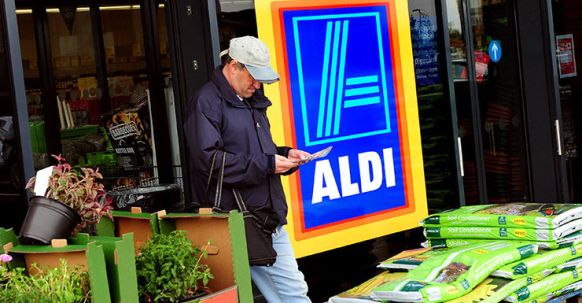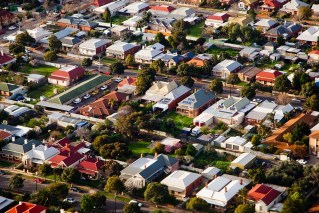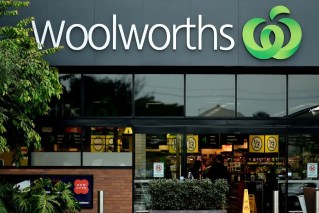Mixed response to call for a Christmas boycott of Coles and Woolworths

Source: TND/TikTok/@dylisium
A call to boycott Australia’s biggest supermarkets has gained more than a million views on social media as consumers endure cost-of-living pressures.
In clips posted to TikTok and since spread across other social media platforms, Queensland auto electrician Dylan Fragomeni urged shoppers to avoid Coles and Woolworths on December 23 and 24 – among the busiest days of the year for supermarkets.
Fragomeni told TND she was inspired to call for a boycott after learning profit margins at the two major supermarkets surged in the past financial year.
Each earned more than $1 billion in profit, while many Australians had to cut back their weekly grocery spends to deal with the rising cost of living.
“I know there’s inflation everywhere, I totally get that. It’s not like Coles and Woolies are the only ones inflating their prices,” Fragomeni said.
“But … enough is enough. If someone doesn’t say, ‘Hey, let’s do something about this’, nothing’s going to get done.”

Dylan Fragomeni has switched her regular supermarket rather than pay higher prices. Photo: Dylan Fragomeni
Even though she’s on a high income, Fragomeni said she still felt forced to switch the bulk of her shopping from Coles to Aldi in recent months to save money.
Not everyone has alternatives to the big supermarkets nearby, but Fragomeni recommended at least shopping before the major holiday period – even if doing so made no overall difference to the retailers’ profits.
“It’s about the message,” she said.
“We’re just trying to say, ‘We can find the same items that you’re selling at a different store for half the price. Are you sure that you’re doing everything to help us out? Because we’re helping you out by shopping with you’.”
A Coles spokesperson said the retailer was “always exploring ways to reduce prices on the products we sell”, and had cut the price on more than 500 products in the past few months.
“For every $100 a customer spends, Coles makes $2.60,” the spokesperson said.
A Woolworths spokesperson similarly pointed to the 3000 products on its Low Price program, price drops for 150 popular Christmas products, and the introduction of lower pricing on select products its loyalty members.
Most shoppers have choice
Many social media users agreed with the motivation behind the boycott, but there was still a split between some who said they’d participate, and those who saw no point when customers were likely to compensate by shopping at the supermarkets earlier.
“The stock is contracted months earlier. If you buy your leg ham on the 19th or the 24th, it makes no difference,” one person wrote on X, formerly Twitter.
Macquarie Business School bachelor of commerce course director Prashan Karunaratne told TND that while Woolworths and Coles controlled the bulk of the supermarket sector, shoppers – especially those in metropolitan areas – did have other options.
He said many shoppers were actualy choosing to pay a high price for convenience, with Coles and Woolworths offering more online ordering and direct-to-boot delivery options than their competitors.

Many shoppers do have alternatives such as Aldi, IGA or smaller supermarkets to choose from. Photo: AAP
“Consumers are voting with their feet … we’re not being held to a gun [while being told], ‘You must go to Coles and Woolworths’,” Karunaratne said.
“It is a free market – there is still opportunity for us to shop elsewhere. And maybe this boycott may reset our priorities [and help people realise] there are other options.”
Producers not benefitting from higher prices
Although food inflation is easing, Australian Bureau of Statistics data shows the price of essentials still rose year on year in September, led by dairy products (10.2 per cent).
Higher shelf prices may have contributed to wider profit margins for retailers such as Coles and Woolworths. But the same can’t necessarily be said for dairy farmers.
Australian Dairy Farmers president Rick Gladigau said although the industry was enjoying some of the best farmgate prices in years due to lower supply in Australia, producers were also dealing with higher production costs, particularly for electricity, fuel and feed.
“The margins aren’t necessarily any better than what they have been,” he said.
“The other side, though, is that while the supermarket prices have increased for dairy, a lot of that has been off the back of [the fact] that we had $1 milk since 2011, for eight or nine years, which created a fair bit of devastation in the industry, in some regions.
“Milk is only back now at [about] $1.60 a litre; it’s actually only back to where it was back in 2011. So really, there has been no gain in the retail price. It’s just got back to where it was.”
Gladigau said he didn’t mind where Australians chose to shop, as long as they supported local dairy – otherwise, it might not be an option in the future.
Fruit and vegetables were the only grocery category in ABS inflation results to show a decrease in price year on year, falling 6.4 per cent compared to September 2022. But it came after months of price increases.
National Farmers Federation Horticulture Council chair Jolyon Burnett said the combination of increasing fuel, labour and interest costs along with strong supply meant growers aren’t getting rewarded for their hard work.
“Times aren’t great for fruit, vegetable, nut and nursery growers at the moment,” he said.
“Profits in this sector are always tight, and prices are not keeping pace with what consumers have seen in the grocery aisle.
“Growers will always benefit, including through better prices, from increased competition at the retail level. Our consistent advice to the public is to be prepared to shop around for a better deal.”
The NFF Horticulture Council wants the government to provide greater price transparency of fresh produce and nursery products at retailers “so that as growers and consumers we can see where the dollars are being made”.








